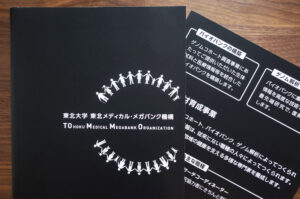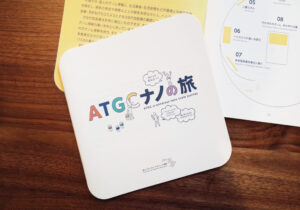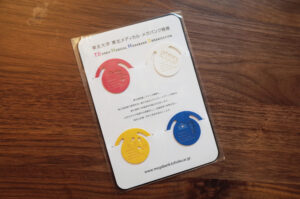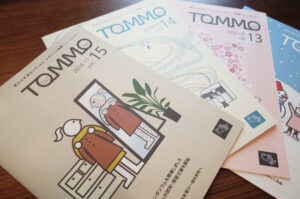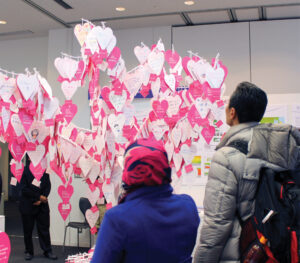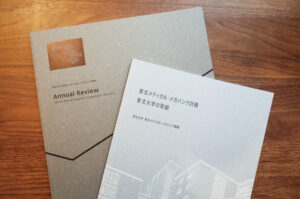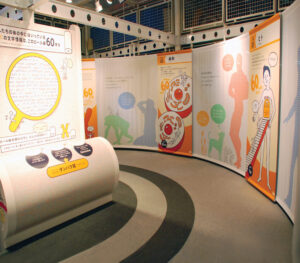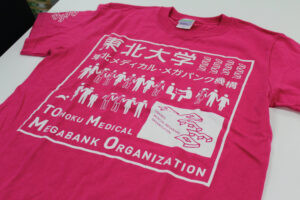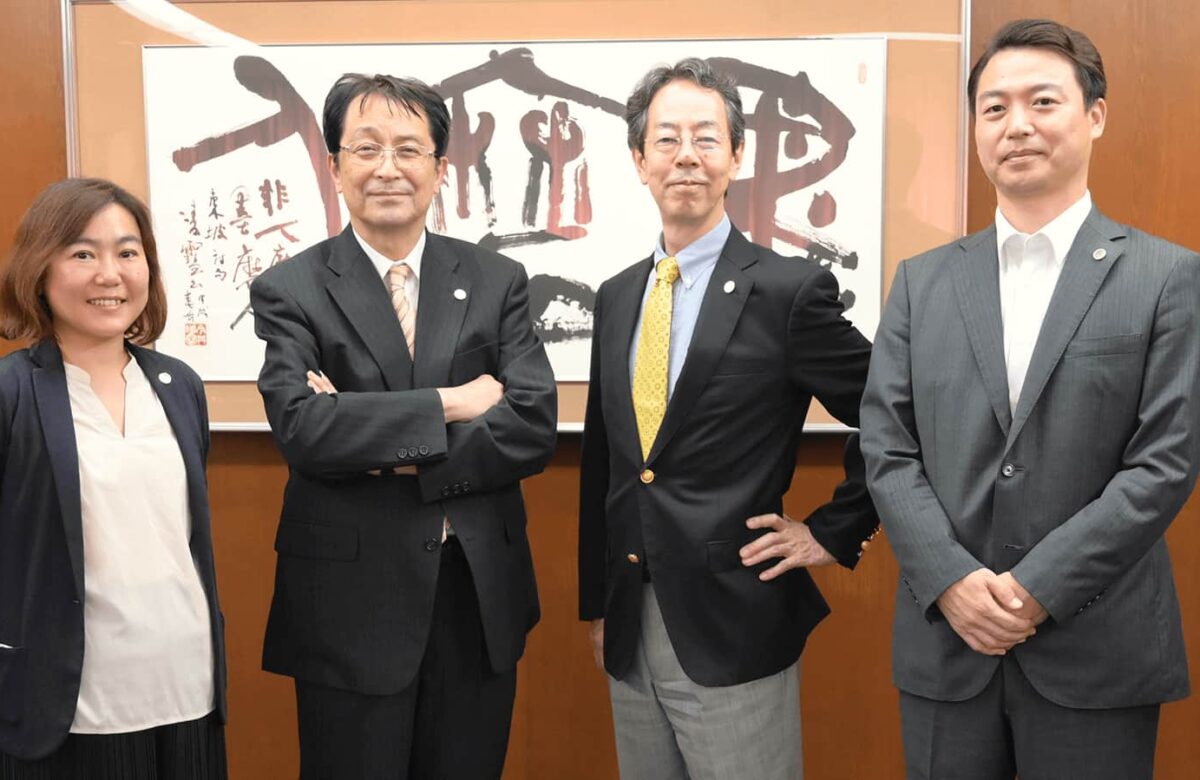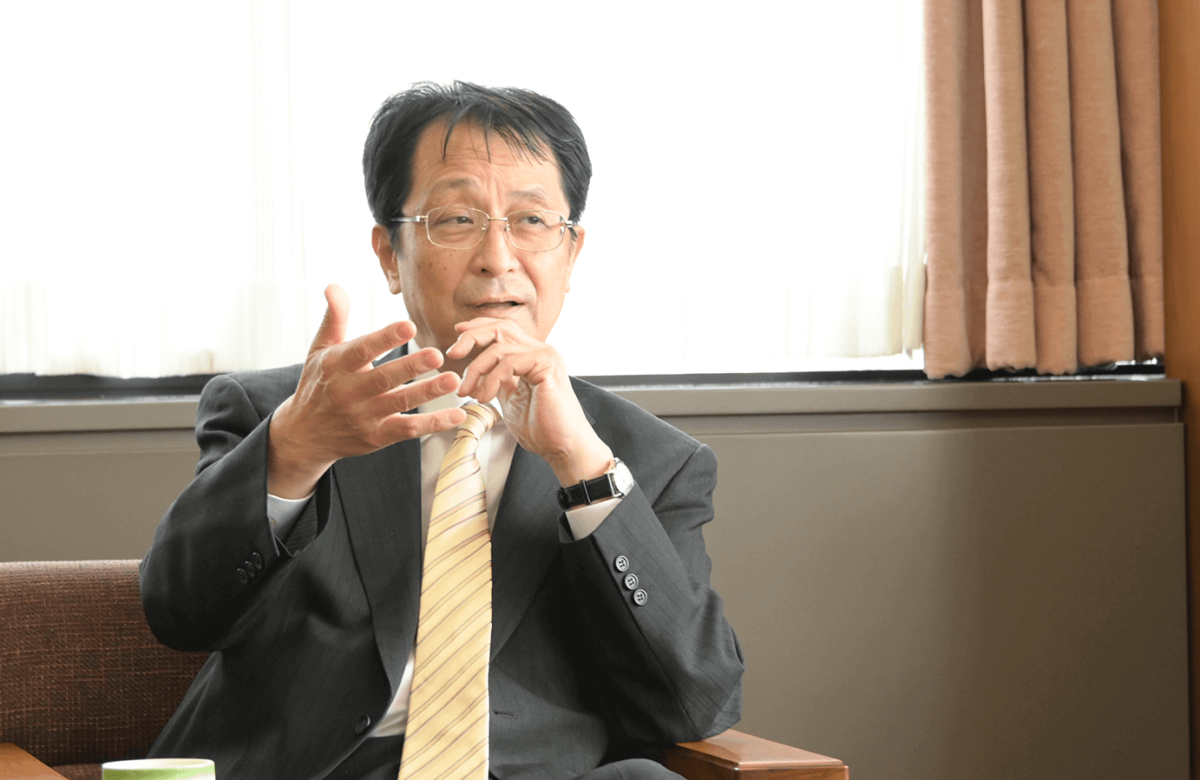What a University In-house Designer Does
We spoke to Miho Kuriki to understand her unique role at the Tohoku Medical Megabank Organization.
- UniversityArticleInterview
- May 1, 2017
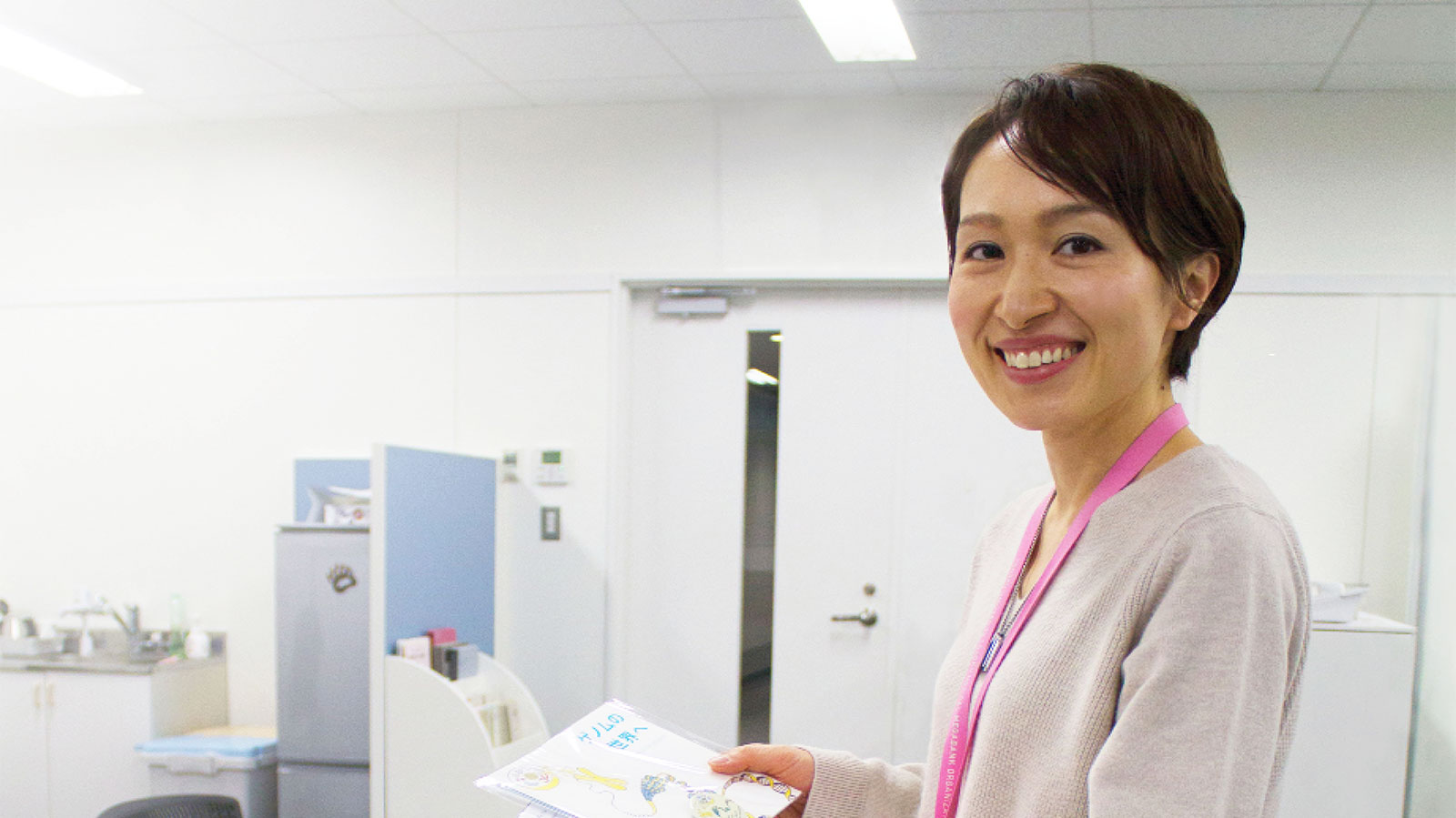
“Design is not just what it looks like and feels like. Design is how it works.” Steve Jobs said this in the context of the iconic Apple products. Design in research and public relations is an important and indispensable function for communicating to lay people something technical and possibly difficult to understand in any other format.
We interviewed Miho Kuriki who is in this unique profession as a specially appointed assistant professor (PR) at the PR strategy office of Tohoku University’s Tohoku Medical Megabank Organization.
Not many research institutions produce as much publicity material. The photos above show a selection of countless designed materials, including everything from standard items such as PR magazines and email newsletters to staff t-shirts for events, postcards, badges, and bookmarks along with all sorts of publicity and educational pamphlets.
Of note is the monochrome pamphlet (01) for its border-free design that makes it easy to read for the colorblind. Winning the Good Design Award in 2014 became a major topic of conversation. Miho Kuriki often applies to her design the idea of making something of great public interest that serves as a conversation starter.
In-house design: Creative work that stems from the desire to make something new right from conception.
When producing a design in-house, you think about aspects like why, what, for whom, and how you are creating the project from the conception stage onwards, and this allows you to give shape to ideas. On the other hand, when it comes to outsourced design – and this is regardless of whether the publicity materials are for a university or research institution – the product, content, and even the text to be used has often already been decided before the order is made, which can result in the company being bound by the text to the point where the visual aesthetic of the piece is limited.
There are times when the organization director will provide a specific theme at the conception stage, and there are times when the parties collaborate from the very beginning with the intention of coming up with something brand new. The department head and designers work together to come up with new ideas and they adapt as they create; in most cases, it takes about three weeks from product planning to completion. This sense of speed and deftness could be due to it being an in-house communications team.
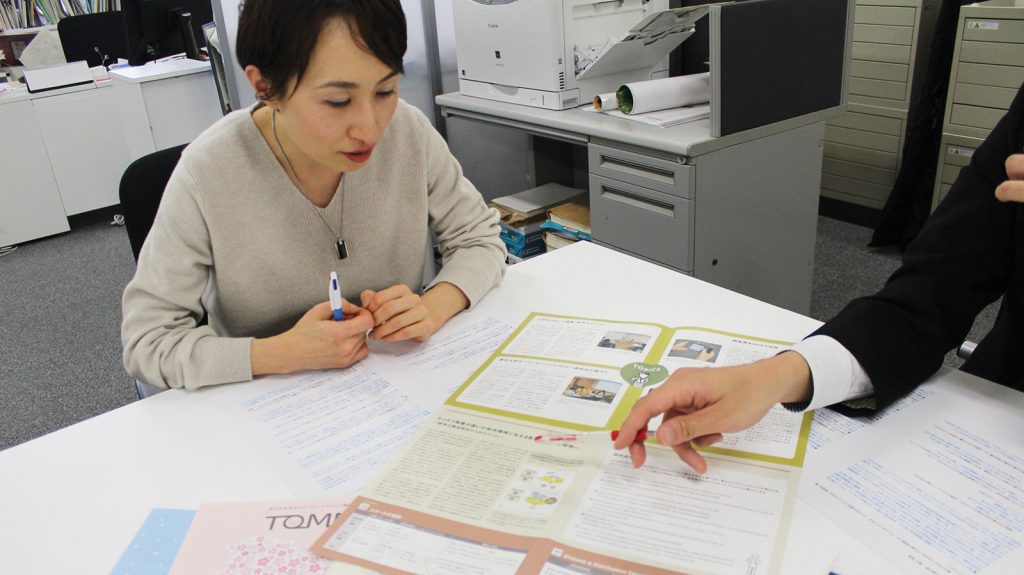
Brainstorming with chief Nagami about the concept of the new products. Narrowing down the purpose and target, layout, illustrations, and designs to be created, and printing paper.
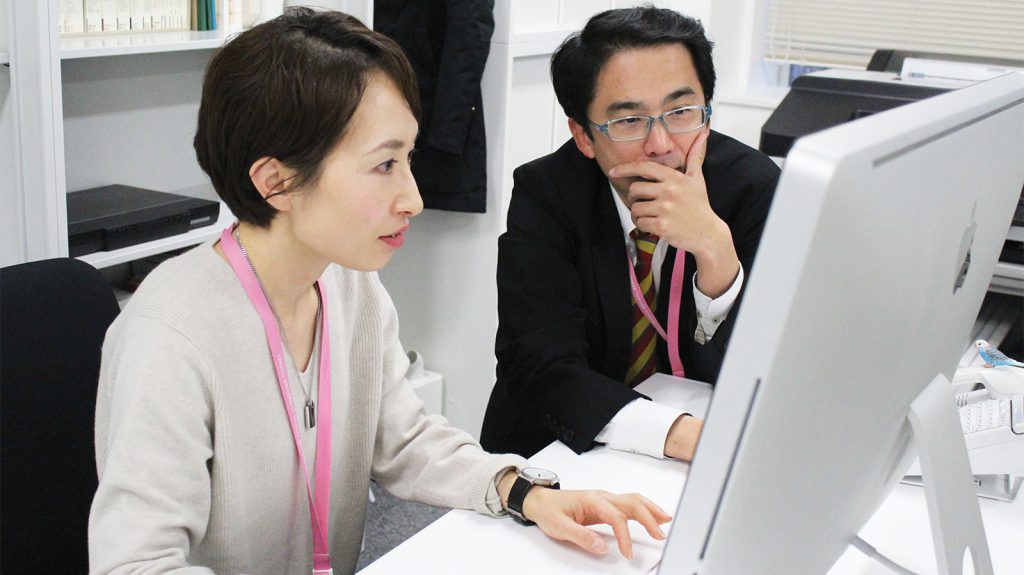
Designing using an iMac. “Most of my work, which is creating design, is done quietly and I take my time.”
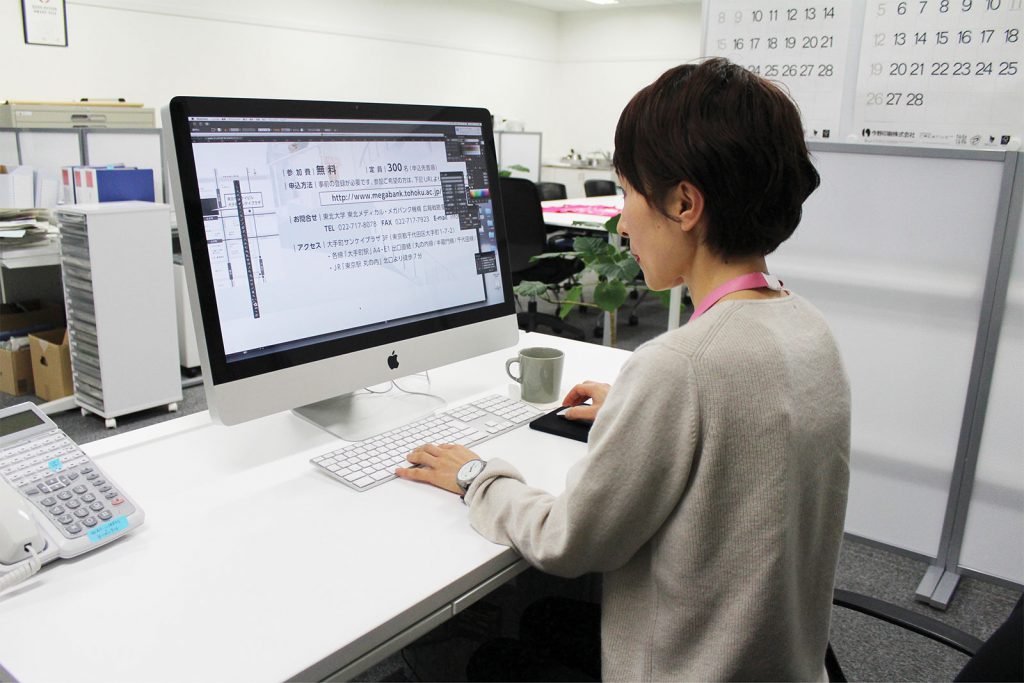
Change directions after confirming the design draft. The design is finalized after the finishing touches.
Powerful and speedy collaborations between the communications director and the designers to keep up with the new
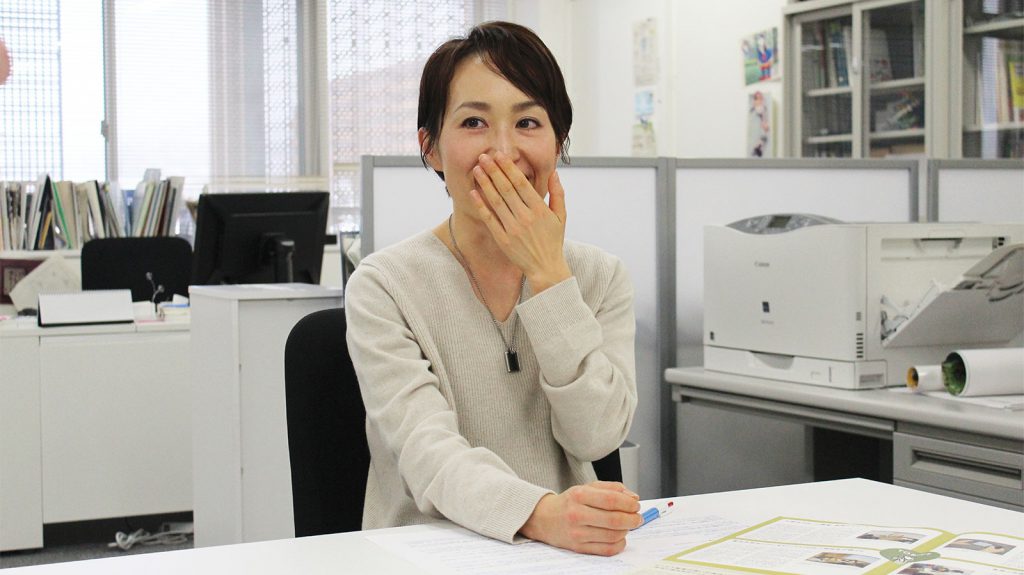
Before coming to Tohoku University, Miho Kuriki worked as a designer at an advertising agency in Sendai city and in a museum doing PR. At a time when she was looking to change jobs out of her desire to focus on design work, she came across a design position through Hello Work for the PR team of Tohoku University’s Neuroscience Global COE. According to Miho, “I was interested to see what design work for the sciences at a university would be like. Having designed for the School of Medicine for five years, I am now moving to the Tohoku Medical Megabank Organization.” You may be tempted to think that some scientific understanding is necessary to work full-time on design for the sciences, but it is the very lack of that knowledge that allows you to take on design challenges with unrestricted creativity.
Miho says, “At first, I had no interest in neuroscience or genes, and I had no idea about the design concepts I was asked to work on. But having worked in design at Tohoku University for ten years now, I think that I have gradually become used to scientific communications.” She talks about her illustration depicting the sharing of genome data, one of the concepts from the Tohoku Medical Megabank Organization. The group leader, Fuji Nagami, came to her with the specific idea to have an image demonstrating genetic information being shared between people by showing a group of people reading a large book with an ATGC cell array written on it. The job of providing clear direction in scientific design and of being able to put that design into an appealing form requires a high level of skill.
What is the appeal of working as an in-house designer at a university? Miho says, “It’s the sense of speed. I find it interesting to make these various products one after the other at such speed. The organization’s projects are so varied that each day brings new experiences, from events to creating massive panels. I can’t think of any other workplace that changes so much.” Perhaps that sense of speed and change could be rare for a university. In any case, when it comes to PR that functions well and produces results– regardless of whether your team is in-house or not – the essential thing is to have strong designers who share the same aims and concepts and create dynamic designs.
MIHO KURIKI
Miho Kuriki is specially appointed assistant professor (PR) at the PR strategy office of Tohoku University’s Tohoku Medical Megabank Organization. She graduated in 1998 from Miyagi Gakuin Women’s University, Faculty of Liberal Arts, Department of English. She specializes in editorial design, graphic design, infographics, and scientific illustration. She moved into a design role at the Tohoku Medical Megabank Organization after working in the PR department for Tohoku University’s School of Medicine GLOBAL COE.
This article is a part of ScienceTalks Magazine issue The Tohoku Spirit: Endeavoring to Establish a Public Relations Team at the Tohoku Medical Megabank Organization.


